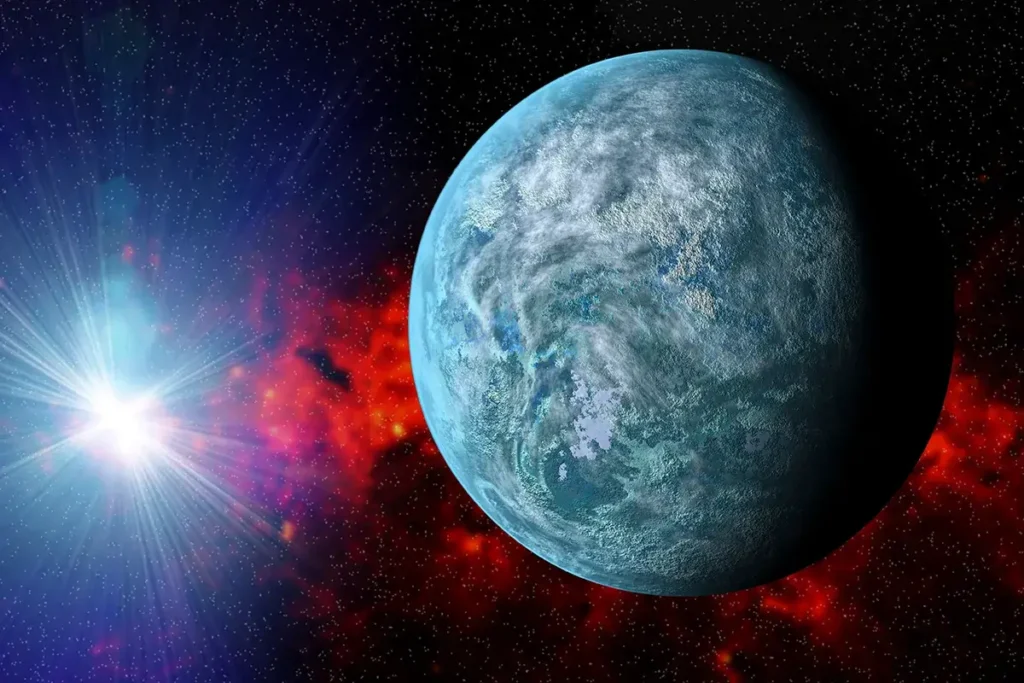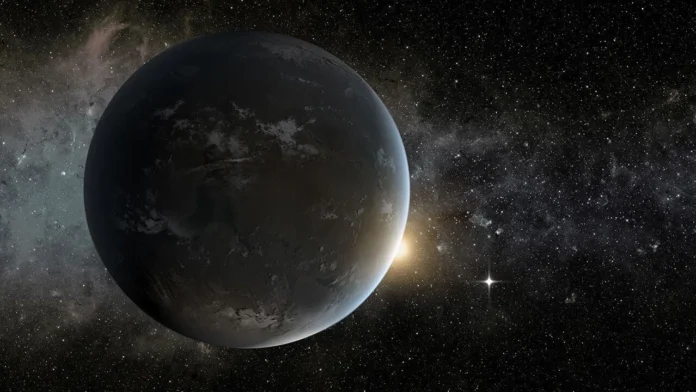Introduction
Scientists have identified an intriguing super-Earth HD 20794d, an exoplanet orbiting a G-type star just 20 light-years away. This planet is of significant interest due to its moderate orbital distance and super-Earth classification. While it does not lie in the habitable zone, studying it helps expand our understanding of planetary formation and composition.
Discovery of HD 20794d
The existence of HD 20794d was first announced in 2011 using the radial velocity method. This technique, employed by the HARPS spectrograph at Chile’s La Silla Observatory, detects planets by measuring minute wobbles in a star’s motion caused by an orbiting planet’s gravitational influence.
By analyzing data over time, astronomers confirmed HD 20794d as one of multiple planets in the system. Its discovery helped solidify the idea that low-mass exoplanets are common around sun-like stars. Further studies have continued to refine our understanding of this planetary system, with new observational techniques providing better estimates of its characteristics and possible atmospheric composition.
Features of Super-Earth HD 20794d
This super-Earth is 4.8 times the mass of Earth and has an estimated radius of 2.04 Earths. It orbits its host star at an average distance of 0.3625 AU, completing one full orbit in 89.7 days. Its orbit is slightly elliptical, with an eccentricity of 0.08, meaning it experiences minor variations in its distance from the star.
Key Characteristics:
- Planet Type: Super-Earth
- Discovery Method: Radial Velocity
- Discovery Year: 2011
- Size: Estimated 2.04 times Earth’s radius
- Mass: 4.8 times Earth’s mass
- Orbital Distance: 0.3625 AU (just over one-third the distance from Earth to the Sun)
- Orbital Period: 89.7 days
- Eccentricity: 0.08 (slightly elliptical orbit)
Given its proximity to its star, HD 20794d is likely too hot to support liquid water. However, studying planets like this provides valuable insights into planetary atmospheres, compositions, and potential formation mechanisms. Additionally, its relatively low eccentricity compared to other exoplanets suggests a more stable orbit, which can have implications for its atmospheric retention and potential geological activity.
Why HD 20794d Matters

Although HD 20794d is not in the habitable zone, it remains a crucial subject for planetary research. Understanding super-Earths like this one helps scientists explore:
- The diversity of planetary systems beyond our own.
- How super-Earths form and evolve in different star systems.
- The atmospheric characteristics of exoplanets with different mass and radius ratios.
- The potential for thick atmospheres or unique geological processes in planets of similar size and mass.
Future telescopes, like the James Webb Space Telescope, could analyze the composition of HD 20794d’s atmosphere, shedding light on its potential for hosting a thick atmosphere or significant geological activity. New spectroscopic techniques may allow scientists to determine if the planet has a dense atmosphere, high levels of volcanic activity, or complex weather patterns that influence its surface conditions.
The Future of Exoplanet Exploration
The search for habitable planets and diverse planetary types continues to expand, with missions like TESS (Transiting Exoplanet Survey Satellite) and PLATO (Planetary Transits and Oscillations of Stars) identifying thousands of exoplanets. Although HD 20794d does not host conditions favorable for life, its unique properties make it a valuable case study for understanding how planets evolve around sun-like stars.
Additionally, new advancements in exoplanet mapping may provide even greater insights into HD 20794d’s composition and atmospheric properties. Scientists are particularly interested in determining whether its atmosphere contains heavy elements, greenhouse gases, or other components that influence planetary temperature and climate. By comparing HD 20794d to other known super-Earths, researchers can gain a clearer picture of how such planets develop and whether they share any characteristics with Earth-like worlds.
Upcoming advancements in spectroscopy, direct imaging, and atmospheric analysis will enable more detailed examinations of exoplanets, further refining our models of planetary formation. Long-term goals include using space-based observatories to directly image super-Earths, offering a new perspective on these distant worlds.
Final Thoughts
The discovery of HD 20794d contributes to our expanding knowledge of super-Earths and planetary systems around sun-like stars. As space exploration technology advances, each new discovery helps refine our understanding of planetary diversity. Studying planets like HD 20794d also brings us one step closer to answering some of the universe’s most profound questions: How common are Earth-like planets? And could some of these distant worlds support life?
Stay tuned for more updates on exoplanet discoveries, space exploration, and the search for alien worlds!



A fascinating insight into this remarkable exoplanet! The article does a great job of breaking down its unique features and significance in the search for habitable worlds.